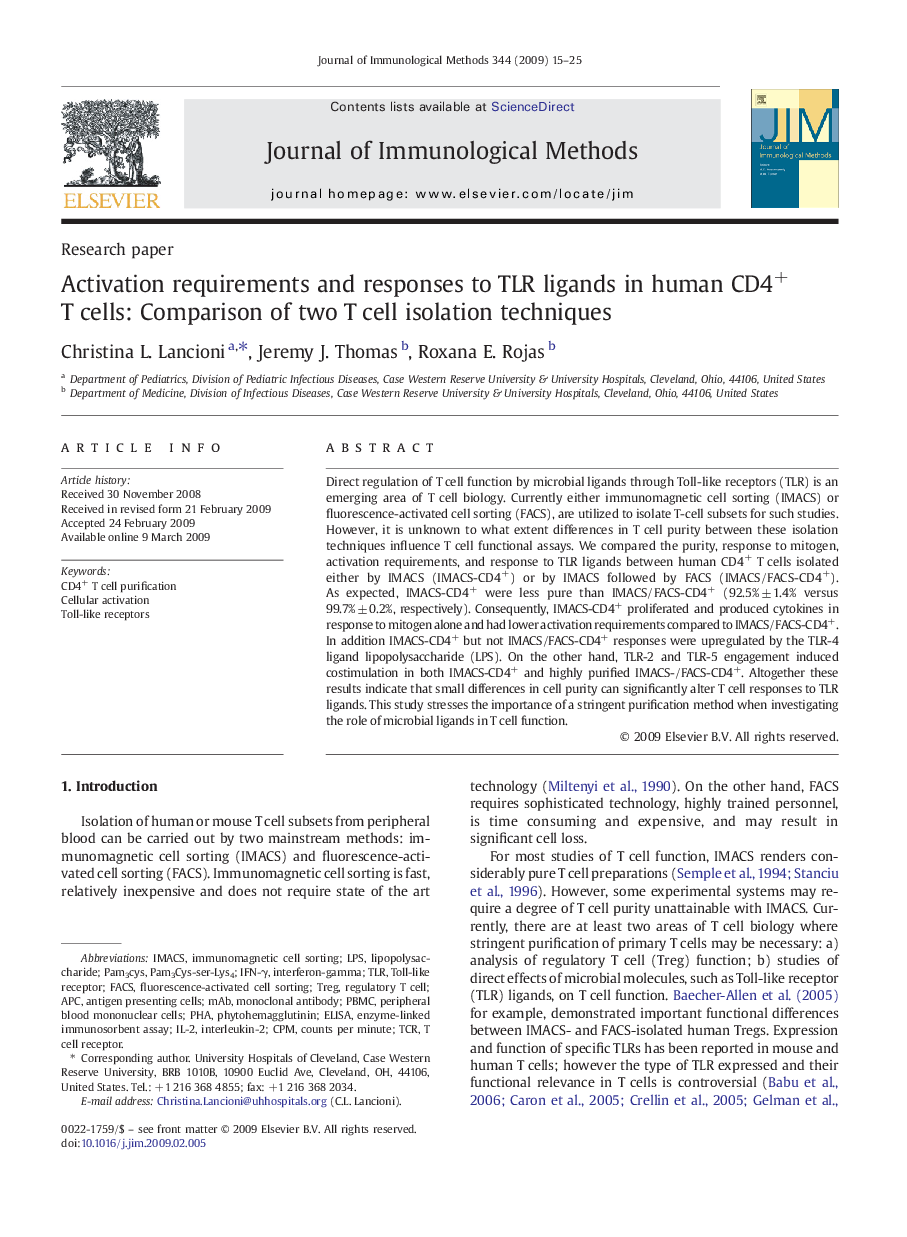| Article ID | Journal | Published Year | Pages | File Type |
|---|---|---|---|---|
| 10889298 | Journal of Immunological Methods | 2009 | 11 Pages |
Abstract
Direct regulation of T cell function by microbial ligands through Toll-like receptors (TLR) is an emerging area of T cell biology. Currently either immunomagnetic cell sorting (IMACS) or fluorescence-activated cell sorting (FACS), are utilized to isolate T-cell subsets for such studies. However, it is unknown to what extent differences in T cell purity between these isolation techniques influence T cell functional assays. We compared the purity, response to mitogen, activation requirements, and response to TLR ligands between human CD4+ T cells isolated either by IMACS (IMACS-CD4+) or by IMACS followed by FACS (IMACS/FACS-CD4+). As expected, IMACS-CD4+ were less pure than IMACS/FACS-CD4+ (92.5% ± 1.4% versus 99.7% ± 0.2%, respectively). Consequently, IMACS-CD4+ proliferated and produced cytokines in response to mitogen alone and had lower activation requirements compared to IMACS/FACS-CD4+. In addition IMACS-CD4+ but not IMACS/FACS-CD4+ responses were upregulated by the TLR-4 ligand lipopolysaccharide (LPS). On the other hand, TLR-2 and TLR-5 engagement induced costimulation in both IMACS-CD4+ and highly purified IMACS-/FACS-CD4+. Altogether these results indicate that small differences in cell purity can significantly alter T cell responses to TLR ligands. This study stresses the importance of a stringent purification method when investigating the role of microbial ligands in T cell function.
Keywords
PhytohemagglutininIMACSTregPam3CysTLRIL-2IFN-γAPCTCrCPMPHAFACSPBMCmAbLPSMonoclonal antibodyAntigen presenting cellsinterferon-gammaInterleukin-2ELISAEnzyme-linked immunosorbent assayToll-like receptorfluorescence-activated cell sortingRegulatory T cellperipheral blood mononuclear cellscounts per minuteCellular activationlipopolysaccharideT cell receptorToll-like receptors
Related Topics
Life Sciences
Biochemistry, Genetics and Molecular Biology
Biotechnology
Authors
Christina L. Lancioni, Jeremy J. Thomas, Roxana E. Rojas,
